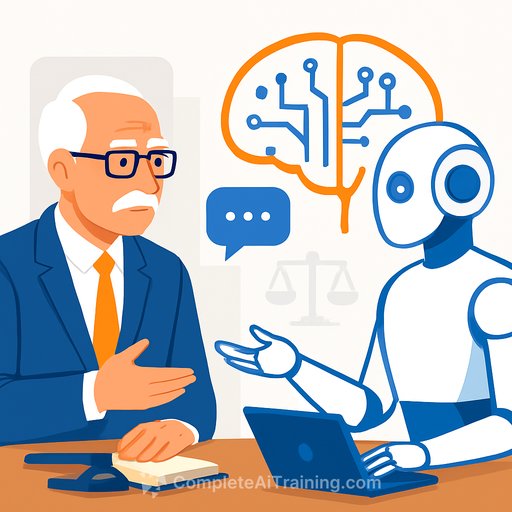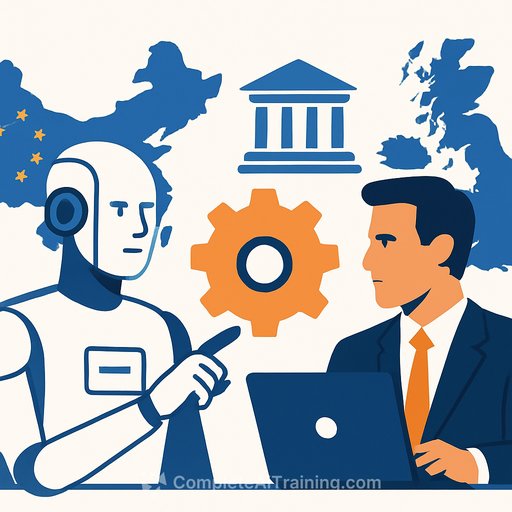I'd Rather Use AI Than Brief a Junior: The Quiet Shift in Law Firm Workflows
A senior lawyer told me they'd rather spin up an AI tool than delegate to a new associate. Not because they dislike teaching. Because the AI is fast, good enough on entry-level tasks, and doesn't come with the emotional overhead.
If that sounds harsh, stay with it. There's a real trade-off here: speed, accuracy, and the human side of supervision.
Why some seniors are choosing AI over juniors
The associate can do the work. But on many manual tasks - summaries, first-pass markups, clause comparisons, issue spotting on standard docs - the AI now matches junior output while running much faster.
The senior still reviews either way. If both paths require review and correction, the quicker loop wins. And the AI accepts blunt feedback without anyone feeling deflated.
The unspoken pain point: feedback
Sending back work that misses key facts isn't optional. It's part of protecting the client and the matter. But giving critical feedback to a new lawyer can feel awkward or risky in a high-pressure week.
With AI, there's no delicate conversation. You just tighten the prompt and rerun. For a busy senior, that can feel like the path of least resistance.
Is the AI actually better?
On certain tasks, parity with a junior is common. It makes similar mistakes, but you can correct them faster by iterating the prompt or asking for a different angle.
Where juniors still shine: judgment calls, novel issues, strategic framing, client context, and anything fact-heavy that demands professional intuition. That's the work that grows a lawyer. The tension is that billable pressure pushes teams toward speed.
The risk ledger (and how to manage it)
- Supervision duty: You can't outsource judgment. Review everything. See ABA Model Rules (5.1/5.3).
- Confidentiality: Lock down data handling. Use approved tools, enterprise controls, and clear no-upload rules for sensitive content unless covered.
- Accuracy: Require citations, show-your-work outputs, and redlines. Ban freeform "trust me" answers.
- Disclosure and billing: Align with client OCGs on AI use and staffing. If a task takes minutes with AI, be upfront about how it's billed.
- Privilege and records: Capture prompts/outputs in the matter file if they inform work product. Keep a clean audit trail.
A practical middle path
You don't need to pick AI or junior. Pair them.
Give the junior the task and the AI as a tool. Make the junior responsible for prompts, checks, and the final draft. The senior reviews once, not three times. Learning still happens, and speed stays high.
Task triage: what goes where
- AI-first (with review): Definitions pulls, clause comparisons, chronology building, standard-form drafting, issue lists, case-law canvassing with citations.
- Junior-first (AI-assisted): Fact-heavy analysis, bespoke drafting, negotiation strategy, client comms, risk memos.
- Senior-only: Novel issues, high-stakes calls, strategy, fee-sensitive scoping, delicate client conversations.
Playbook for busy teams
- Set SOPs: Templates for common prompts, required outputs (citations, redlines, assumptions), and QC steps.
- Ban risky inputs: No confidential uploads without approved channels and vendor terms. Use enterprise tools.
- Review once: One-pass senior review with tracked changes. No endless ping-pong.
- Measure: Track cycle time, revision rounds, error severity, and client feedback. Adjust staffing based on data.
- Bill honestly: Align time entries with reality. If AI did the heavy lifting, reflect that and highlight the value: speed, clarity, reduced risk.
For juniors who want to thrive
- Own the tool: Learn prompt patterns, retrieval techniques, and how to force citations and redlines.
- Deliver "review-ready" work: Always include sources, assumptions, and a short "what I checked" note.
- Ask for judgment reps: Volunteer for client notes, negotiation prep, and bespoke drafting. That's where you grow.
- Build trust fast: Hit deadlines, flag risks early, and explain your thinking in plain language.
For partners and leaders
- Redesign leverage: Smaller teams can still train well. Use AI to remove drudge work and spend time on judgment.
- Protect the pipeline: Don't starve juniors of hard problems. Rotate them through strategy tasks with structured feedback.
- Set a firm-wide stance: Approved tools, clear policies, client-ready disclosures, and billing guidance.
- Invest in training: Make AI proficiency and supervision skills part of core competency, not optional extras.
The hard truth (and a workable answer)
AI often ties a junior on routine work and wins on speed. If the review burden is similar, seniors will pick the faster loop. That choice is rational - unless it undermines training, client trust, or long-term talent.
The answer is structure: codify where AI helps, keep humans in charge of judgment, and make learning deliberate. Do that, and you get speed today without burning tomorrow.
Want to uplevel team skills fast?
If you're setting standards for AI use across roles, these resources can help: AI courses by job function.
Your membership also unlocks:




